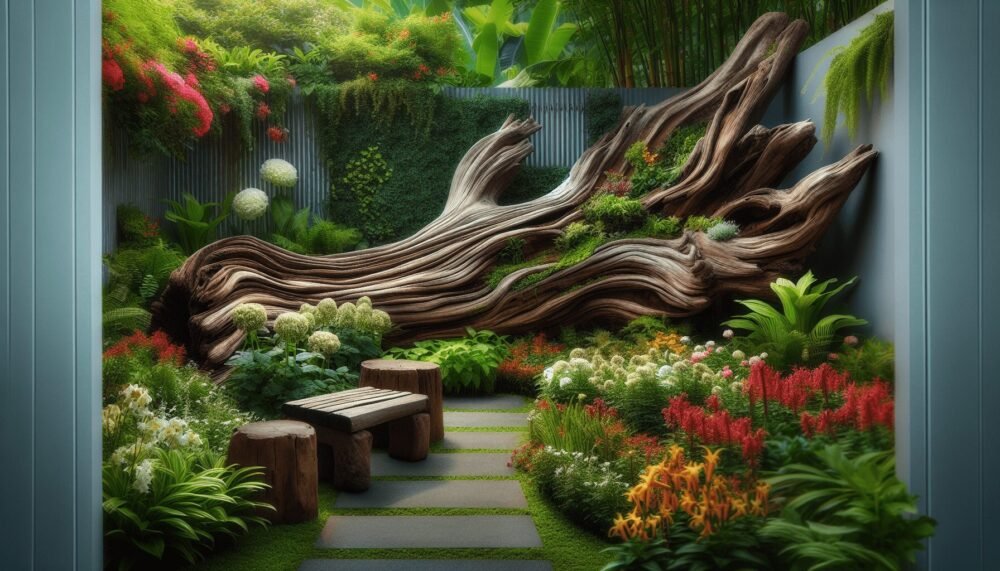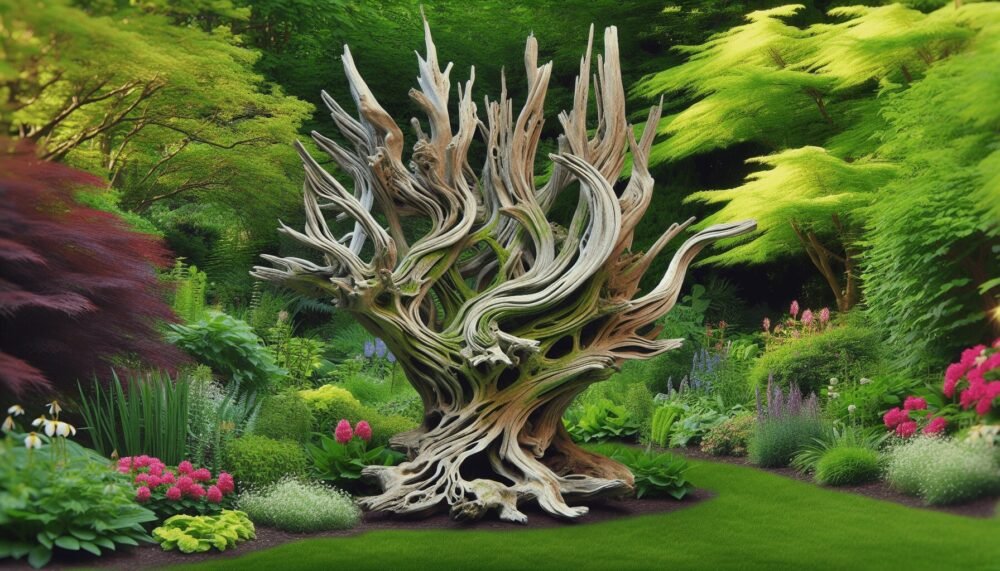Picture yourself strolling along a serene beach, the gentle sound of waves crashing in the distance, when your eyes meet the captivating sight of a driftwood fence. This unique creation not only enhances the natural beauty of the coastline but also serves as a charming, eco-friendly barrier that breathes life into any landscape. In this article, you’ll discover the artistry and practical benefits of incorporating a driftwood fence into your own outdoor space, transforming it into a coastal haven that reflects the splendor of nature itself. Have you ever walked along a beach and stumbled across a piece of driftwood that seemed to tell its own story? Driftwood is nature’s way of transforming discarded pieces of wood into something beautiful and timeless. Now, imagine harnessing that naturally weathered charm into a functional and stunning piece for your home—a driftwood fence.

What is Driftwood?
Driftwood refers to wood that has been washed onto a shore or beach by the action of winds, tides, or waves. This wood can originate from various environments and undergoes a unique transformation that gives it its distinctive appearance. The elements strip away the bark and smooth out the rough edges, resulting in wood that is both durable and aesthetically fascinating.
Benefits of a Driftwood Fence
Natural Aesthetic
One of the most compelling features of a driftwood fence is its natural beauty. Each piece of wood is unique, and the weathering process creates textures and hues that no artificial process can replicate.
Eco-Friendly
Using driftwood for your fence is an environmentally friendly option. It makes use of natural resources and reduces the need for new timber harvesting. Moreover, it helps clean up beaches and waterways.
Durability
Driftwood is naturally resistant to decay and pests. This is because it’s been exposed to the elements for an extended period, making it sturdy and long-lasting.
Ease of Maintenance
Once installed, a driftwood fence requires minimal maintenance. Unlike traditional wood fences that may need regular staining or painting, driftwood retains its beauty over time with minimal upkeep.
Sourcing Driftwood
Legality
Before you start collecting driftwood, it’s important to understand the legal regulations in your area. In some locations, removing driftwood from beaches is prohibited to protect the ecosystem. Always check local guidelines and obtain any necessary permits.
Best Locations
Driftwood is commonly found along coastlines, especially in areas with strong tidal actions. Riverbanks and lakeshores can also be good sources. Scout out different locations to find the best pieces for your fence.
Quality Selection
Not all driftwood is suitable for a fence. Look for pieces that are sturdy and free from rot. Ideally, the wood should be thick enough to withstand pressure and have a uniform shape for easier assembly.
Designing Your Driftwood Fence
Styles
There are various styles to choose from depending on your preference and the look of your property. Some popular styles include:
| Style | Description |
|---|---|
| Rustic | Uses varied sizes and shapes for a more natural, uneven look. |
| Modern | Emphasizes uniformity and sleek lines, often paired with metal elements. |
| Traditional | Resembles typical wooden fences but with the unique texture of driftwood. |
| Vertical Slats | Vertically arranged pieces for a contemporary look. |
| Horizontal Slats | Horizontally arranged pieces for a streamlined appearance. |
Measurements
Before you begin construction, measure the area where the fence will be installed. This will help you determine the amount of driftwood you’ll need. Measure twice to ensure accuracy and to avoid any surprises during the building phase.
Additional Materials
- Fasteners: Screws, nails, and metal brackets will be needed to secure the driftwood pieces.
- Tools: Basic tools like a hammer, screwdriver, and saw are essential. A power drill can make the job easier.
- Posts: Wooden or metal posts serve as the foundation for your fence. Choose materials that complement the driftwood.
- Finishing Supplies: While driftwood is naturally beautiful, you might want to add a sealant for extra protection.

Building Your Driftwood Fence
Preparation
Start by clearing the area where the fence will be installed. Remove any debris, rocks, or plants to ensure a smooth working surface. Next, mark the spots where the fence posts will go. The distance between posts should be consistent to provide a stable framework.
Setting the Posts
- Dig Holes: Use a post hole digger to create holes for the fence posts. The depth should be around 1/3 of the post’s height.
- Add Gravel: Pour a few inches of gravel at the bottom of each hole for drainage.
- Place the Posts: Position the posts in the holes and fill the remaining space with concrete or more gravel. Make sure the posts are level.
- Allow to Set: Let the concrete or gravel settle and harden before attaching any driftwood pieces.
Attaching Driftwood
- Sort Driftwood: Organize your driftwood pieces by size and shape. This will make the assembly process smoother.
- Pre-drill Holes: Pre-drilling holes in the driftwood can prevent splitting when you attach it to the posts.
- Secure Driftwood: Start attaching the driftwood from either the bottom or top, depending on your design. Use screws or nails to secure each piece to the posts.
- Check Alignment: Regularly check that each piece is level and aligned with adjacent pieces to ensure a professional finish.
Finishing Touches
- Trim Excess: Any excess driftwood sticking out can be trimmed for a clean look.
- Sealant: Consider applying a sealant to protect the driftwood from further weathering and pests.
- Inspect: Walk around your newly installed fence to inspect for any loose pieces or areas that need additional fastening.
Maintaining Your Driftwood Fence
Regular Inspections
Periodically inspect your fence for any signs of wear or damage. Checking the fastenings and posts ensures that your fence remains sturdy.
Cleaning
Over time, your driftwood fence may accumulate dirt and debris. Use a gentle brush and water to clean the fence. Avoid using harsh chemicals that can damage the wood.
Repairs
Address any damage promptly to prevent it from worsening. Replace any broken driftwood pieces and tighten loose screws or nails.
Cost Considerations
Initial Investment
While the cost of driftwood is generally low or free, other materials like posts, fasteners, and tools will contribute to the overall cost. Additionally, if you need to purchase driftwood, factor that into your budget.
Long-term Savings
The durability and low maintenance of a driftwood fence translate to long-term savings. Unlike other fencing materials that require frequent upkeep, a driftwood fence maintains its beauty and functionality over time.
Comparative Costs
| Fence Material | Initial Cost | Maintenance Cost | Durability |
|---|---|---|---|
| Driftwood | Low to Moderate | Low | High |
| Traditional Wood | Moderate to High | Moderate to High | Moderate |
| Vinyl | High | Low | High |
| Metal | High | Low | High |
Creative Ideas for Using Driftwood in Your Fence
Driftwood Accents
If a full driftwood fence is not feasible, consider adding driftwood accents to an existing fence. This can include driftwood post caps, horizontal slats, or decorative pieces integrated into the design.
Driftwood Gate
A driftwood gate can serve as a stunning centerpiece for your fence. Use larger, more visually striking pieces for the gate to highlight its uniqueness.
Mixed Material Fence
Combine driftwood with other materials like metal or stone for a mixed-material fence. This can enhance the visual appeal and add structural stability.
Legal and Ethical Considerations
Environmental Impact
While driftwood is a great resource, it’s crucial to consider the environmental impact of removing it from its natural habitat. Always collect driftwood responsibly, ensuring you do not disrupt local wildlife or ecosystems.
Local Regulations
As mentioned earlier, always check local regulations before collecting driftwood. Some areas have strict rules to preserve natural landscapes.
Respect Private Property
Ensure that you are collecting driftwood from public areas or have permission if it’s on private property. Trespassing can lead to legal issues and fines.
Conclusion
Building a driftwood fence is a unique and rewarding project that combines natural beauty with functionality. From sourcing the perfect pieces to crafting a design that complements your property, a driftwood fence offers numerous benefits and creative possibilities. Remember to respect the environment and adhere to local regulations while collecting driftwood. With the right materials, tools, and a bit of creativity, you can create a stunning fence that will be the envy of your neighborhood. So why not start planning your driftwood fence today? It’s a project that promises to be as enjoyable as it is beautiful.



